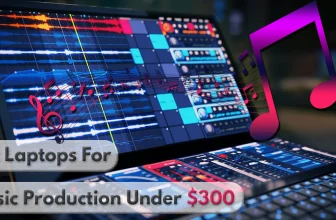Forget the craft store woes! Gone are the days of limited selection and endless aisles. With a Cricut machine in hand, you’ve unlocked a world of creative possibilities. But to unleash your inner artist, you need the perfect partner: a laptop that can keep up with your design dreams.
Now, the world of laptops can feel as overwhelming as a glitter explosion in a kindergarten classroom. This guide will cut through the confusion and help you find the perfect machine to complement your Cricut.
It’s Not Just About Looks (But Those Do Matter):
Sure, a sleek, lightweight laptop is tempting. But prioritize functionality first. Here’s the lowdown on the key specs to consider:
- Processor (CPU): The brain of your laptop. Look for an Intel Core i5 or AMD Ryzen 5 for smooth performance with Cricut Design Space.
- RAM (Memory): Think of RAM as your workspace. More RAM (8GB or higher) means juggling multiple designs and software with ease.
- Storage: Where your creativity is stored! Opt for a Solid State Drive (SSD) for speedy program loading and file transfers.
- Display: A bright, high-resolution screen is ideal for intricate designs. Consider a 15.6-inch display or larger for ultimate comfort.
Beyond the Basics: Bonus Points for Power Users
- Operating System: Windows 10 or 11 are compatible with Cricut Design Space. If you plan on venturing beyond Cricut software, explore Mac compatibility.
- USB Ports: A Cricut must-have! Ensure you have enough USB ports to connect your machine and other peripherals.
- Graphics Card: Not essential for basic Cricut use, but consider a dedicated graphics card for designers who dabble in photo editing or illustration.
The Budget Breakdown: Finding Your Perfect Fit
There’s a laptop for every crafter’s budget. Here’s a quick roadmap:
- Thrifty Crafter (Under $500): A Chromebook or budget-friendly Windows laptop with decent specs can handle basic Cricut tasks.
- Creative Climber ($500-$800): This sweet spot offers mid-range laptops with solid performance for most Cricut projects.
- Design Dynamo (Above $800): High-performance laptops with powerful processors and ample RAM cater to serious crafters who juggle complex designs and additional software.
Remember, the best laptop is the one that empowers your creativity! Do your research, consider your needs, and get ready to transform your crafting game.
P.S. Don’t forget to factor in portability if you plan on taking your Cricut creations on the go!
If your budget is tight, and you still want to get a laptop that can handle your crafting projects, then this guide is for you. Below, we’ve put together a list of the laptops for Cricut under 500.
This is great news for anyone interested in learning how to use a Cricut machine because you don’t have to spend a small fortune on a luxury laptop,
So those on a tight budget can also enjoy the hobby or turn it into a potential business.

System Requirements
| Internet | Offline |
|---|---|
| Minimum download speeds of 2–3 Mbps Upload speeds of 1–2 Mbps | Design Space is Available without an internet connection |
| Rates for standard data may apply. | The memory usage required depends on the application. |
With these requirements in mind, let’s take a look at some of the laptops for Cricut under $500.
laptop for Cricut Maker: Our Top Picks
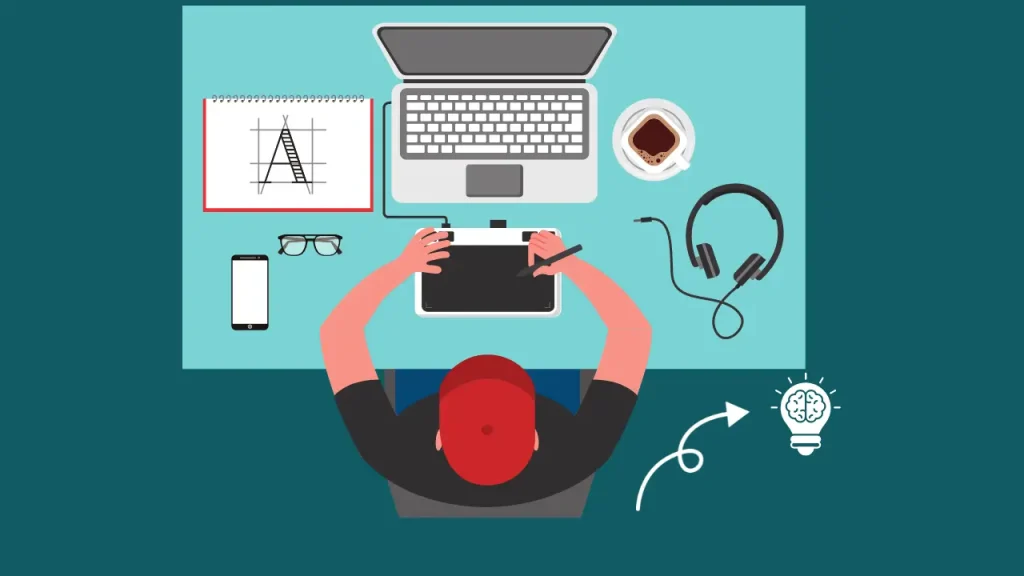
HP Stream 14-HP LAPTOP FOR CRICUT MAKER
| Dimensions | 13.27 x 0.70 x 8.90 Inches |
| Display Resolution | 1366 x 768 pixels |
| Screen Size | 14 Inches |
| Weight | 3.17 lb |
| Memory | 4 GB |
| SSD | 64 GB emmc |
| Processor Count | 2 |
| RAM Type | DDR4 SDRAM |
| Operating System | Windows 10 Home in S mode |
Let’s face it, Chromebooks aren’t exactly known for being powerhouse laptops. But there’s a place for them in the market, and the HP Stream 14 might be the perfect Chromebook for the right user.
The Stream 14 certainly has limitations. It’s powered by an Intel Celeron processor, which isn’t exactly known for blazing-fast speeds. Likewise, RAM options are typically on the lower end, at 4GB or 8GB.
But here’s the beauty of Chromebooks: they don’t need top-of-the-line specs to run smoothly. Chrome OS is a lightweight operating system, which means the Stream 14 can handle everyday tasks like browsing, email, and document editing without a hitch. Plus, you get the added benefit of tight integration with Google services.
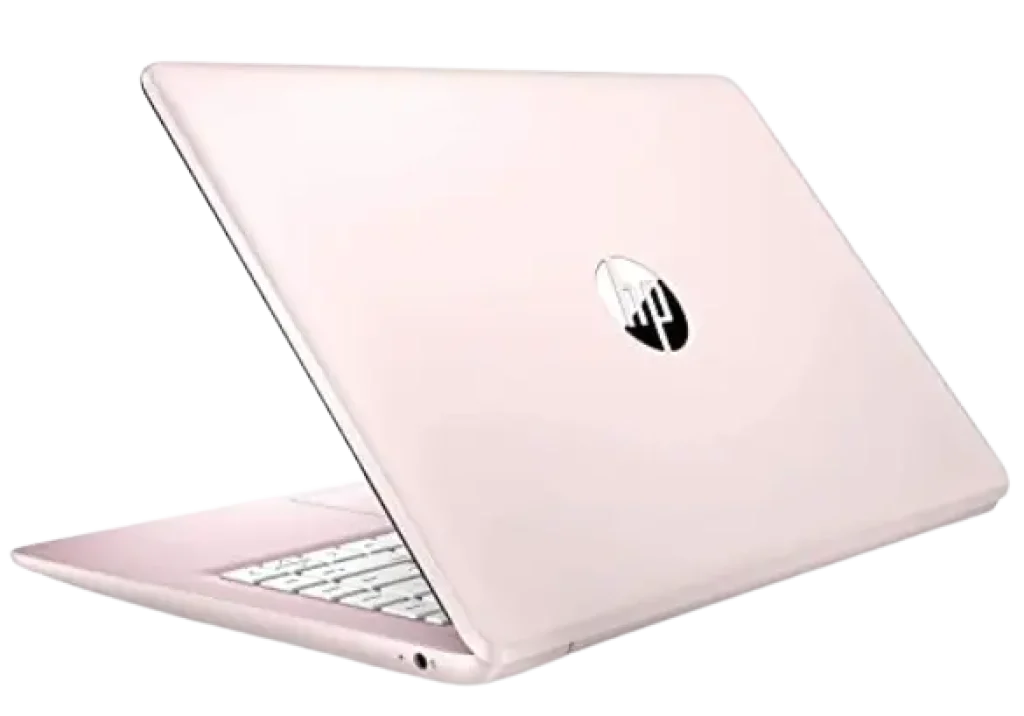
Another area where the Stream 14 shines is battery life. You can expect to squeeze out a full day’s work or entertainment on a single charge. This makes it a great choice for students or anyone who needs a laptop for extended use on the go.
The Acer Aspire 5: All-Rounder or Overachiever?
| Dimensions | 14.31 x 9.74 x 0.71 inches |
| Display Resolution | 1920 x 1080 pixels |
| Screen Size | 15.6 inches |
| Weight | 3.97 lbs |
| Memory | 4 GB |
| SSD | 128 GB |
| Processor Count | 2 |
| RAM Type | DDR4 SDRAM |
| Operating System | Windows 10 Home S |
The Acer Aspire 5 boasts a “do-it-all” attitude, attempting to cater to students, casual users, and even some creative professionals. But can it truly deliver on all these fronts? Let’s dissect the Aspire 5 and see if it lives up to the hype.
Jack of All Trades, Master of Some:
The Aspire 5 comes in a variety of configurations, offering a range of processors (from Intel Core i3 to i7 and AMD Ryzen equivalents). This allows for some customization based on your needs. However, this versatility can be a double-edged sword. Budget-friendly options might struggle with demanding tasks, while high-end configurations can feel like overkill for basic use.
Balancing Act: Performance vs. Price
Affordability is a key selling point for the Aspire 5. But remember, you get what you pay for. Lower-priced models might skimp on RAM (sometimes just 4GB), leading to sluggishness when multitasking. Upgrading to 8GB is almost a necessity for a smoother experience. Storage options are typically a mix of hard drives (HDDs) and solid-state drives (SSDs). HDDs offer ample storage but are slower, while SSDs provide zippy performance but less space.

The Aspire 5 partially redeems itself with a comfortable keyboard and a decent selection of ports. The display, however, can be a bit of a letdown. While some configurations offer Full HD resolution, some budget options settle for lower resolutions, making visuals less sharp.
So, Who’s the Aspire 5 Really For?
The Aspire 5 finds its sweet spot with students or casual users who prioritize affordability and everyday tasks like browsing, streaming, and light productivity. If you’re a creative professional or gamer, you’ll likely crave the extra muscle of a more powerful machine.
HP Pavilion x360: The Shape-Shifting Companion for Modern Multitaskers
| Dimensions | 12.8 x 8.7 x 0.7 inch |
| Display Resolution | 1366×768 pixels |
| Screen Size | 14 inches |
| Weight | 3.55 lbs |
| Memory | 8 GB |
| SSD | 128 GB |
| Processor Count | 4 |
| RAM Type | DDR4 SDRAM |
| Operating System | Windows 10 S |
The HP Pavilion x360 isn’t your average laptop. This 2-in-1 device bends over backwards (literally) to fit your lifestyle. But is its flexibility all flash and no substance? Let’s untangle the truth about the HP Pavilion x360 and see if it’s the perfect match for your mobile needs.
Transformer Time: Unveiling the x360’s Secret Weapon
The x360’s defining feature is its 360-degree hinge. This chameleon-like ability allows it to morph from a traditional laptop to a tablet and everything in between. Tent mode is perfect for presentations, while stand mode lets you binge-watch shows in comfort.
This versatility is a boon for multitaskers. Artists can sketch on the touchscreen with a compatible stylus, students can take notes in tablet mode, and professionals can easily switch between presentations and brainstorming sessions.
Beyond the Gimmick: Does it Deliver Performance?

The x360 isn’t just a party trick. It offers a range of configurations with capable processors (Intel Core i3 to i7 and AMD Ryzen options) and decent RAM (up to 16GB). This means it can handle everyday tasks like browsing, document editing, and even some light gaming without breaking a sweat. Storage options range from traditional hard drives (HDDs) for ample storage to speedy solid-state drives (SSDs) for faster boot times and application loading.
The touchscreen itself is responsive and vibrant, making it a joy to use in tablet mode. Battery life is another strong point, with some models lasting a full workday on a single charge.
Is the x360 Right for You?
The HP Pavilion x360 is a compelling option for students, artists, and professionals who crave a versatile device that can adapt to their work style. The combination of a traditional laptop and a tablet in one package is a major selling point. However, if you prioritize raw power for gaming or heavy video editing, a traditional laptop with a dedicated graphics card might be a better fit.
| Dimensions | 12.76 x 8.66 x 0.74 inches |
| Display Resolution | 1920 x 1080 pixels |
| Screen Size | 14 inches |
| Weight | 3.31 lbs |
| Memory | 4 GB |
| SSD | 128 GB |
| Processor Count | 2 |
| RAM Type | DDR4 SDRAM |
| Operating System | Chrome OS |
The ASUS VivoBook Flip 14 enters the ring of convertible laptops, promising both affordability and flexibility. But can it truly compete with pricier 2-in-1 options? Let’s flip this VivoBook over and see if it stands out from the crowd.
Bending on a Budget: The Flip’s Allure
There’s no denying the appeal of the VivoBook Flip 14’s price tag. It’s a fantastic option for budget-conscious users who crave the functionality of a 2-in-1 laptop. The 360-degree hinge allows it to transform from a traditional laptop to a tablet, making it suitable for everything from note-taking to casual browsing.
This flexibility is particularly attractive for students or artists who want to sketch or take notes directly on the screen. The touchscreen itself is responsive, although some users might find it a little less vibrant compared to higher-end options.
Under the Hood: Can it Handle the Flip?
Here’s where the budget aspect comes into play. The VivoBook Flip 14 relies on modest processors (typically Intel Celeron or Pentium) and lower RAM configurations (often 4GB). This keeps the cost down, but it also limits its capabilities. Don’t expect to run demanding software or edit large files with ease.
Storage options are typically limited to hard disk drives (HDDs). While HDDs offer ample storage space, they’re slower than solid-state drives (SSDs) found in pricier laptops. This can lead to slower boot times and application loading.
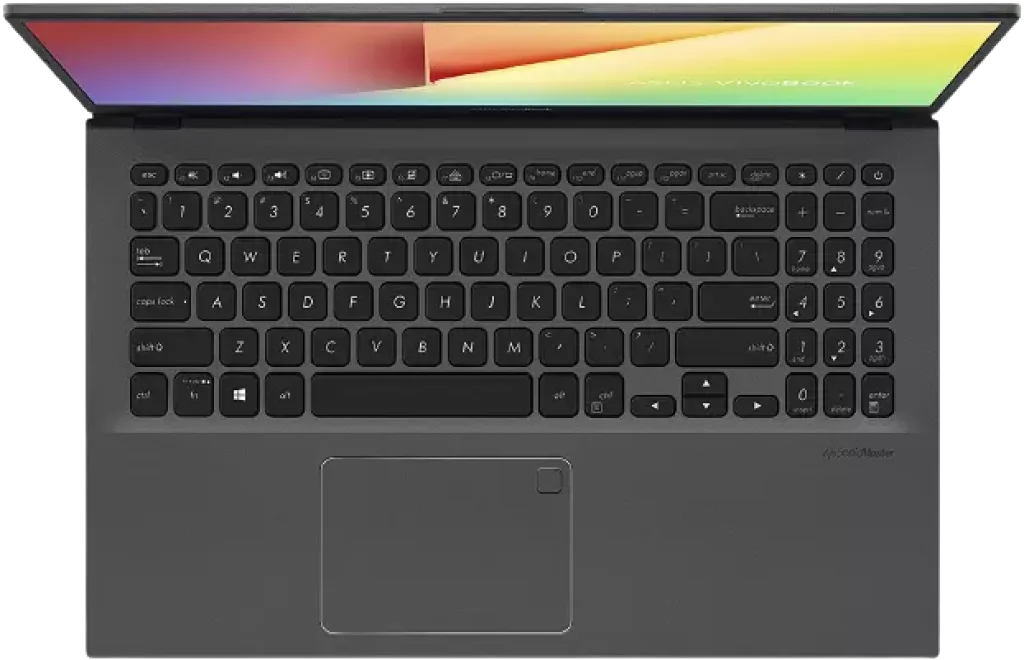
The Flip Side of the Coin: Is it Worth the Compromise?
The ASUS VivoBook Flip 14 is a good option for those who prioritize affordability and a convertible form factor above raw power. Students on a tight budget or casual users who primarily browse the web, stream videos, and manage basic tasks might find it perfectly adequate.
However, if you crave a more responsive experience, faster performance, or plan on using demanding software, you’ll likely need to invest in a more powerful (and pricier) 2-in-1 option.
HP 14″ Touchscreen: Touch-Enabled Productivity on a Budget
| Dimensions | 12.75 x 8.89 x 0.78 inches |
| Display Resolution | 1366 x 768 |
| Screen Size | 14 inches |
| Weight | 3.25 lbs |
| Memory | 8 GB |
| SSD | 128 GB |
| Processor Count | 2 |
| RAM Type | DDR4 SDRAM |
| Operating System | Windows 10 |
The HP 14″ Touchscreen beckons budget-minded users with the allure of a touchscreen experience at an affordable price. But is it a finger-waggingly good deal or a feature-stripped compromise? Let’s peel back the layers and see if this HP touchscreen laptop hits the mark.
Reaching Out and Touching It: The Allure of Affordability
There’s no denying the headline grabber here: a touchscreen at a budget-friendly price point. This makes the HP 14″ an interesting option for students, casual users, or anyone who wants to dabble in the world of touch-based computing without breaking the bank.
The touchscreen itself is responsive, allowing for intuitive navigation and interacting with compatible apps. Whether you’re scrolling through social media, browsing photos, or signing documents electronically, the touch functionality adds a layer of convenience.
Under the Hood: Can it Handle the Clicks?
But affordability often comes with trade-offs. The HP 14″ Touchscreen typically relies on less powerful processors, like Intel Celeron or Pentium chips. While perfectly suitable for everyday tasks like web browsing, checking email, and light productivity work, don’t expect it to be a multitasking monster.

RAM configurations are often on the lower end too, often starting at 4GB. Upgrading to 8GB might be necessary for a smoother experience, especially if you plan on juggling multiple programs or tabs. Storage options typically consist of hard disk drives (HDDs), which offer ample space but can feel sluggish compared to the lightning-fast speeds of solid-state drives (SSDs) found in higher-end laptops.
The Verdict: Touchscreen on a Budget, But…
The HP 14″ Touchscreen carves a niche for itself in the budget laptop market. It delivers the functionality of a touchscreen at an attractive price point, making it a good option for casual users or students on a tight budget.
However, if you crave snappier performance, plan on running more demanding software, or prioritize speedy storage, you might need to look beyond this touchscreen temptress.
Lenovo Chromebook Flex 5: The “Just Enough” Chromebook
| Dimensions | 12.2 x 8.43 x 0.67 inches |
| Display Resolution | 1920 x 1080 pixels |
| Screen Size | 13.3 inches |
| Weight | 2.97 lbs. |
| Memory | 4 GB |
| SSD | 64 GB |
| Processor Count | 1 |
| RAM Type | DDR4 |
| Operating System | Chrome OS |
The Lenovo Chromebook Flex 5 promises an effortless middle-of-the-road laptop experience. But in the ever-evolving world of Chromebooks, does “just enough” cut it anymore? Let’s break down the Flex 5 and see if it’s merely adequate or a surprisingly satisfying choice.
Chrome-Powered Simplicity: The Good and the Bad
The Flex 5 runs on Chrome OS, which is a lightweight and super-efficient operating system. This means snappy performance with basic hardware, great battery life, and tight integration with Google services. If you live in the world of web browsing, Gmail, Google Docs, and light productivity apps, the Flex 5 won’t let you down.
However, Chrome OS limitations are real. You can’t install traditional desktop software, so power users who rely on Photoshop, specialized editing tools, or high-end games will find it stifling.
Balancing Act: Performance vs. Price
The Flex 5 offers a range of configurations typically powered by Intel Pentium or Core i3 processors. This provides enough oomph for everyday tasks but might struggle with heavy multitasking. RAM options usually hover around 4GB-8GB, with the sweet spot being 8GB for a smoother Chrome OS experience.

Storage is often limited to eMMC (similar to flash drives) or modest SSDs. While it provides enough space for most users, those with large media libraries or who crave lightning-fast speeds might find it restrictive.
The Bottom Line: Who is the Flex 5 Really For?
The Lenovo Chromebook Flex 5 appeals to students, casual users, or those looking for a trusty secondary device. It excels at simple tasks and delivers a “no fuss” computing experience.
However, if you need extra processing power, want to tinker with non-Chrome OS software, or desire a more premium build quality, the Flex 5 might leave you wanting more.
Microsoft Surface Go 2: The Pint-Sized Powerhouse (or is it?)
| Dimensions | 7.81 x 10.61 x 1.83 inches |
| Display Resolution | 1920 x 1280 |
| Screen Size | 10.5 inches |
| Weight | 1.00 lbs |
| Memory | 4 GB |
| SSD | 64 GB SSD |
| Processor Count | 1 |
| RAM Type | DDR4 SDRAM |
| Operating System | Windows 10 Home |
The Microsoft Surface Go 2 boasts a sleek, ultra-portable design and promises capable performance in a tiny package. But can this little device truly compete with its bigger, badder laptop brethren? Let’s put the Surface Go 2 under the microscope and see if it’s a mobile marvel or a miniature compromise.
Mighty Morphing Mini: Designed for Mobility
There’s no denying the Surface Go 2’s biggest selling point: its size and weight. This little laptop is incredibly portable, making it perfect for students who lug their devices between classes or travelers who crave a compact companion. The detachable keyboard adds versatility, allowing you to switch between laptop and tablet mode with ease.
The kickstand deserves a shoutout too. It offers multiple angles for comfortable typing or movie marathons on the go.
The Inner Workings: Can the Go Keep Up?
Here’s where things get interesting. The Surface Go 2 relies on low-power Intel Pentium Gold processors. While perfectly adequate for basic tasks like browsing, email, and note-taking, don’t expect it to be a multitasking machine. Power users who crave demanding software or intense photo editing will find it lacking.

RAM configurations are typically limited to 4GB or 8GB. Upgrading to 8GB is recommended for a smoother experience, especially if you plan on juggling multiple apps. Storage options are also modest, with most models offering eMMC flash storage or lower-capacity SSDs. While expandable storage via microSD helps, it can’t quite match the speed of a traditional SSD.
The Verdict: Ideal for Some, Insufficient for Others
The Microsoft Surface Go 2 thrives as an ultra-portable device for students or casual users who prioritize mobility and basic tasks. Its lightweight design, detachable keyboard, and long battery life make it a compelling travel companion.
However, if you crave raw power, extensive storage, or plan on running resource-intensive programs, the Surface Go 2 might feel underpowered.
Buying Guide: 8 Important Things to Consider Before Buying Your Laptop for Cricut

Cricut machines are awesome! They give you incredible creative freedom. But to unleash your inner crafting genius, you need a laptop that can keep up. Picking the perfect laptop for your Cricut adventures can be overwhelming. Let’s break down the key factors to consider before you buy:
1. Operating System Compatibility
First things first: Cricut Design Space software plays best with Windows and macOS. If you own a Chromebook, you’re out of luck (for now). For Mac lovers, you’re good to go as long as you meet other requirements. Windows users have more choice, but make sure your potential laptop is running Windows 10 or 11.
2. Processor Power (CPU)
Think of your CPU as the brain of your laptop. Cricut Design Space recommends an Intel Core i5 or AMD Ryzen 5 (or their equivalents) for a smooth experience. These processors will handle intricate designs without making you want to tear out your perfectly cut vinyl.
3. RAM: Your Workspace
RAM lets you multitask like a pro. While you can get by with 4GB, aim for at least 8GB for a lag-free Cricut experience. More RAM means less waiting and more crafting!
4. Storage: Where Your Projects Live
Cricut projects can take up space, especially if you work with complex designs or store images and fonts. Opt for a Solid State Drive (SSD) for its speedy loading times. A 256GB SSD is a good starting point, but consider 512GB or more if you’re a prolific crafter.
5. Display Size and Quality
A bigger screen is always better for detailed designs. A 15.6-inch display is perfect, but 13-inch or 14-inch laptops can still work. Look for a laptop that offers at least Full HD (1080p) resolution for crisp images and accurate color representation.
6. Graphics Card: Not Totally Essential
A dedicated graphics card isn’t mandatory for Cricut, but it’s a bonus if you plan to dabble in photo editing or other design software alongside your Cricut projects.
7. Ports: Connectivity is Key
Make sure your laptop has enough USB ports to connect your Cricut machine and any external accessories like a mouse or keyboard. A USB-C port is a nice bonus for future-proofing!
8. Battery Life: Craft on the Go
If you love crafting on the go, prioritize battery life. Look for a laptop that promises at least 6-8 hours of unplugged use.
What is the cheapest laptop to use with a Cricut?
While you can technically find super cheap laptops that barely meet the minimum requirements to run Cricut Design Space, I don’t recommend going that route. Investing in a slightly better laptop will give you a much smoother and more enjoyable experience. Here’s why:
Why the Absolute Cheapest Isn’t the Best:
- Lagging and Frustration: Underpowered laptops will struggle with Cricut Design Space, leading to slow loading times, freezes, and overall frustration.
- Limited Growth: A bottom-of-the-barrel laptop might handle simple Cricut projects now, but you’ll quickly hit its limits if your designs become more complex.
- Short Lifespan: Super cheap laptops often cut corners on build quality, meaning they might not last very long.
Finding the Sweet Spot: Affordable AND Functional
Here’s a breakdown of budget-friendly options that provide a better Cricut experience:
- Chromebooks: A decent option for light Cricut use if you stick to basic tasks and designs. Look for models with at least 4GB of RAM and Intel Pentium processors (or equivalent).
- Used/Refurbished Laptops: You can often find great deals on used or refurbished Windows laptops with decent specs. Aim for Intel Core i3/i5 processors (or AMD equivalents) and at least 8GB of RAM.
- Budget Windows Laptops: Several brands offer budget-friendly Windows laptops that can handle Cricut projects. Look for models with Intel Celeron or Pentium processors, at least 4GB of RAM, and an SSD for faster performance (at least 128GB).
Remember: Prices fluctuate, so it’s best to do some research. Check out online marketplaces, refurbished options from reputable sellers, and sales during seasons like back-to-school or Black Friday.
Important Note: Even with a budget-friendly laptop, ensure it has enough USB ports for your Cricut machine and any additional accessories you might use!
WHAT ARE the softwares for professional Cricut users?

Vector Design Powerhouses
These programs are essential for intricate design work, advanced editing, and creating your own custom cut files:
- Adobe Illustrator: The industry-standard vector design software. It offers unmatched precision, limitless design tools, and seamless file compatibility with Cricut Design Space. Perfect for creating logos, complex illustrations, and professional-grade designs.
- CorelDRAW: Another powerful vector design software with a comprehensive toolkit and excellent customization options.
- Inkscape: A fantastic free and open-source alternative to Illustrator and CorelDRAW. It has a vibrant community and offers a wide range of vector design tools.
Image Editing for Enhanced Projects
Get the most out of your photographs and images for unique Cricut creations with:
- Adobe Photoshop: The go-to image editing software for professionals. It allows for advanced photo retouching, image manipulation, and preparing intricate designs for Cricut cutting.
- GIMP: A free and powerful alternative to Photoshop, offering a similar range of image editing features.
- Affinity Photo: A more affordable, streamlined alternative to Photoshop that’s gaining popularity among creatives.
Beyond the Basics: Niche Software for Specialized Needs
These specialized tools cater to specific crafting areas:
- Silhouette Studio (For Silhouette cutting machines): This is the primary design software for Silhouette cutting machines. If you own both a Cricut and Silhouette machine, this becomes quite important.
- Sure Cuts A Lot (SCAL): Popular third-party design software offering advanced features and compatibility with various cutting machines.
- Font Creation Software: Tools like FontLab and Glyphs allow you to create your own unique fonts for personalized Cricut projects.
Choosing the Right Software:
- Budget: Adobe products require a subscription fee, while GIMP and Inkscape are free. Consider your budget and how much you’re willing to invest.
- Skills: Vector software like Illustrator and CorelDRAW have a steeper learning curve.
- Needs: If you only need basic image editing, Photoshop might be overkill, and GIMP or Affinity Photo could be better choices.
Important Tip: Many of these programs offer free trials. Experiment and find the software that fits your workflow and creative style best!
THE LAST WORDS
After careful consideration and research, we have compiled a list of the laptops for Cricut under $500.
While there’s no single “perfect” laptop for everyone using a Cricut, choosing the best laptop for you comes down to these key points:
- Your Needs vs. Your Budget: Find the best balance between essential features and affordability. Prioritize these:
- Intel Core i5 or AMD Ryzen 5 processor (or equivalent)
- 8GB RAM minimum
- SSD storage (at least 256GB, more if possible)
- Decent screen size (15.6-inch ideal, smaller is doable)
- Windows or macOS compatibility
- Don’t Skimp to the Extreme: While budget is important, an underpowered laptop will frustrate you with slow performance, limiting your designs and enjoyment. Invest a little more for a smoother experience.
- Consider Your Future: If you think you’ll move beyond simple Cricut projects, factor in the ability to handle photo editing or vector design software down the line.
- Used or Refurbished Can Be Great: You may find powerful laptops with solid specs at lower prices within the used/refurbished market.
Some final thoughts:
- Read Reviews: Research specific laptop models that fit your budget and needs. Look for user reviews that mention how they perform with Cricut Design Space.
- Shop Sales: Watch out for sales and discounts, especially during back-to-school season or major holidays.
- Versatility is Key: A well-rounded laptop that handles Cricut smoothly will also make it useful for a range of other everyday tasks and entertainment.
faqs
WILL ANY LAPTOP WORK WITH CRICUT?
The answer to this question is a bit complicated. It depends on what you want to use your Cricut for. If you just want to use it for simple tasks like cutting paper, then any laptop should work fine. However, if you want to use your Cricut for more complex tasks like cutting vinyl or fabric, then you will need a laptop that is compatible with the Cricut Design Space software.
WHAT KIND OF COMPUTER DO I NEED FOR THE CRICUT MAKER?
The Cricut Maker is compatible with both Windows and Mac computers. You’ll need a computer that has a USB port and an internet connection. Ideally, your computer should also have a built-in Bluetooth 4.0 adapter. This will make it easier to connect your Cricut Maker to your computer.
HOW DO I CONNECT MY CRICUT TO MY LAPTOP?
First, you’ll need to download the Cricut Design Space software onto your computer. Once you’ve done that, you can connect your Cricut Maker to your computer using a USB cable. Once your Cricut Maker is connected, you’ll be able to use it with the Design Space software.
CAN I USE A CHROMEBOOK FOR CRICUT?
Yes, you can use a Chromebook for Cricut. However, you’ll need to make sure that your Chromebook is compatible with the Cricut Design Space software. You can check this by going to the Cricut website and looking under the “System Requirements” section.
WHAT LAPTOPS WORK WITH CRICUT?
Some laptops that work with Cricut are the MacBook Air, MacBook Pro, and iMac. These laptops are all compatible with the Cricut Design Space software.
DO I NEED A LAPTOP TO USE A CRICUT?
No, you don’t need a laptop to use a Cricut. You can use a desktop computer or even a tablet. However, if you want to use your Cricut for more complex tasks like cutting vinyl or fabric, then you will need a laptop that is compatible with the Cricut Design Space software.
WHAT LAPTOPS ARE THE BEST FOR USING CRICUT DESIGN SPACE?
The laptops for using Cricut Design Space will depend on the individual needs and preferences of the user. However, some of the most popular options among professionals include MacBooks, Dells, and Lenovos. These laptops offer a wide variety of features and tools that can be used to create complex designs, and they are also compatible with a wide range of different machines. If you’re not sure which laptop is right for you, it’s always good to consult with a professional Cricut provider or ask other users for their recommendations.
WHAT IS THE BEST RAM SETUP FOR CRICUT DESIGN SPACE?
The best RAM setup for Cricut Design Space is 8GB of RAM or more. This will ensure that your laptop can handle the demands of the software without any issues.
WHICH MOBILE SOC SHOULD BE PRIORITIZED FOR RUNNING CRICUT DESIGN SPACE?
It depends on a number of factors, including budget, performance requirements, and personal preferences. However, some mobile SoCs that are popular among Cricut Design Space users includes the Qualcomm Snapdragon 835, Samsung Exynos 8895, and Apple A11 Bionic. These chipsets offer high performance and are capable of running Cricut Design Space smoothly. Other mobile SoCs that are also worth considering includes the Huawei Kirin 970 and the MediaTek Helio X30.






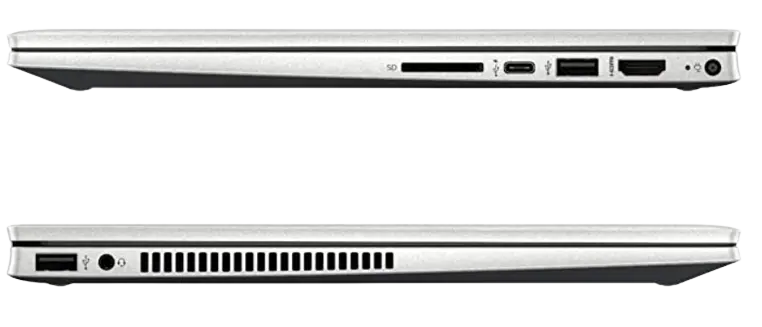
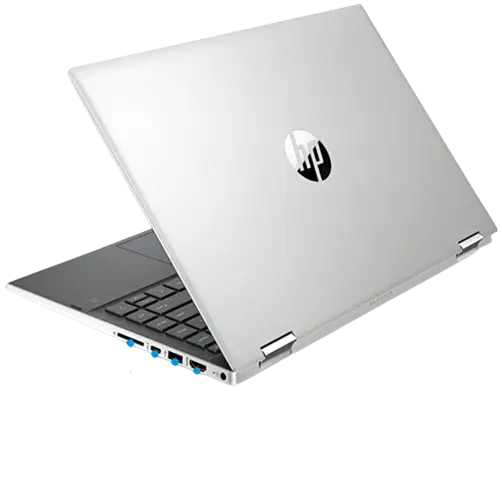
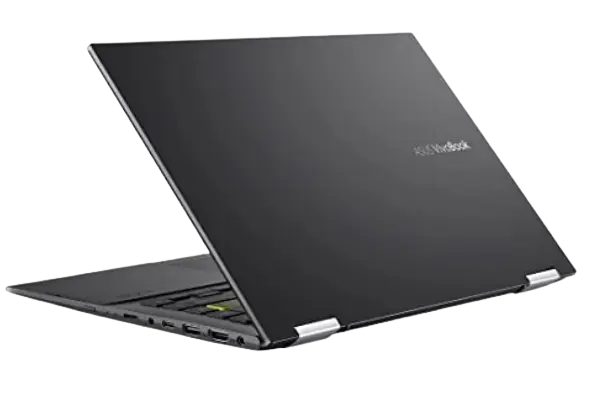


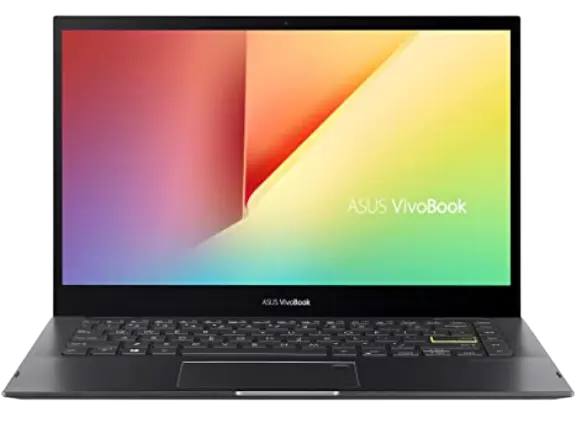

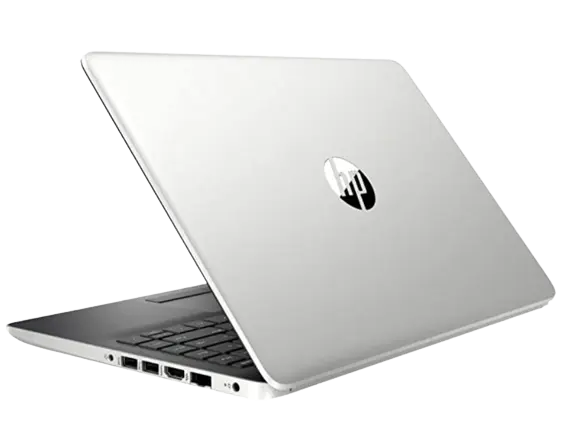
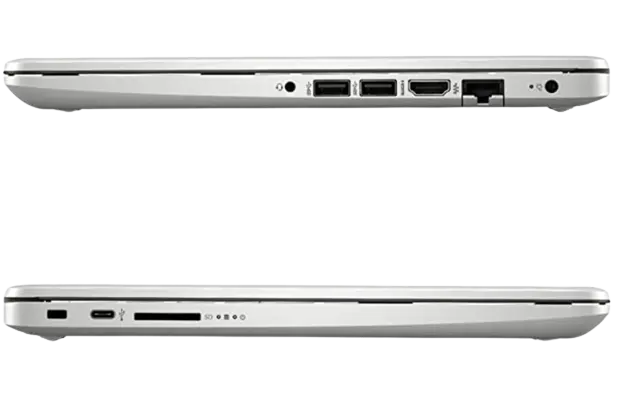
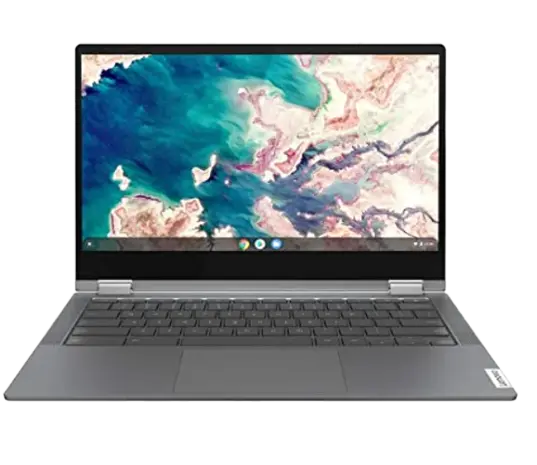

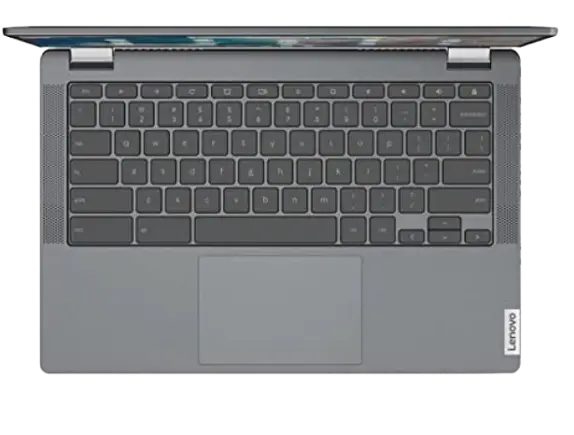

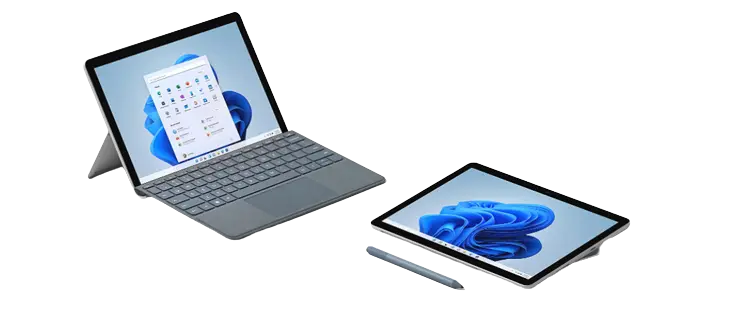


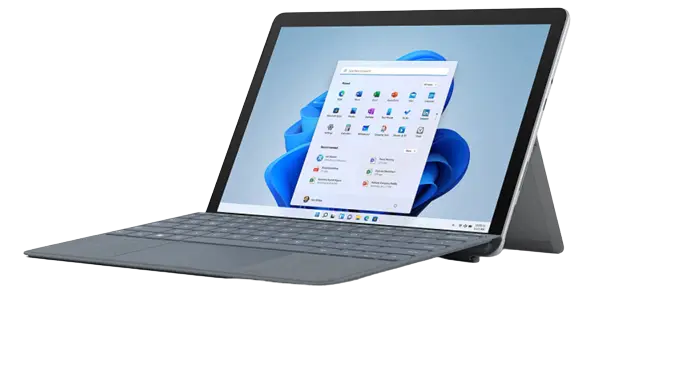
![Best laptop for cricut under $500-7 Upgrading Picks [2024]](https://yourgadgetgeek.com/media_file/thumbs_dir/BEST-LAPTOPS-FOR-PRO-TOOLS-2-qd15h0naibt2al0dcf1ytqz4oq6ekmbdjqmoiyh5j0.webp)
![Best laptop for cricut under $500-7 Upgrading Picks [2024]](https://yourgadgetgeek.com/media_file/thumbs_dir/best-laptop-for-video-editing-under-700-featured-image-qd15h1l4p5ucm6z06xgle8qla41rsbf3vva608frcs.webp)
